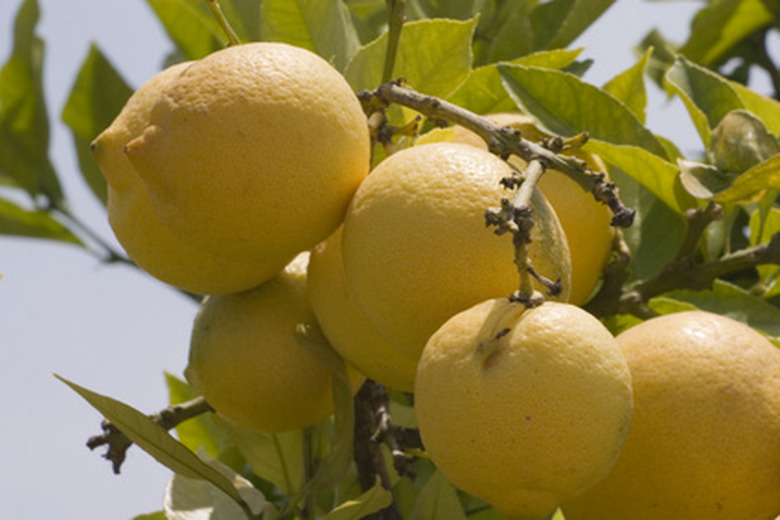How To Grow Lemon Trees In East Texas
Lemon trees are well-suited to growing in the eastern Texas climate of high heat and humidity. This area gets much more rainfall and tends to be more of a subtropical climate compared with the rest of Texas. Lemon trees will thrive in high heat as long as they have a good source of water and will have more fruit set than cooler or drier areas.
Step 1
Choose a site that is set up from lower areas, where cold air might accumulate during the winter days. Also, make sure it is sheltered from the wind. Lemons tend to have long branches that can be easily broken in windy storms, such as the hurricanes that tend to pass through this area of the country.
Step 2
Find a variety of lemon that is suitable for your area, from your area. According to Julian W. Sauls, a horticulturist at the Texas A&M University System, "all citrus trees planted in Texas must have been propagated in Texas from Texas-grown plant materials, i.e., it is illegal under Texas statutes to import citrus trees, seedlings, plants, budwood or graftwood from any other state or country."
- Lemon trees are well-suited to growing in the eastern Texas climate of high heat and humidity.
- Lemon trees will thrive in high heat as long as they have a good source of water and will have more fruit set than cooler or drier areas.
Step 3
Prune your tree regularly. When you are growing lemon trees in a highly humid area, fungus and disease are more prone to bother the tree. Keeping the tree well-pruned will reduce the number of fungal spores as well as allow better application of the fungicides and pesticides.
Step 4
Analyze the soil. Since lemon trees tend to pull a lot of minerals and nutrients from the soil, you will need to know what is in the soil. Take a sample from the soil at least two months after the last application of fertilizer and have it checked at your local agricultural extension office. The office probably will request that you take a dozen samples in the area around your tree. Half of them should be from soil 6 inches deep and the other half from soil 12 inches deep under the tree. The combination of all of them will give a good representation of your soil. Add nutrients to balance the soil according to the extension's office recommendations for a lemon tree.
- Prune your tree regularly.
- Since lemon trees tend to pull a lot of minerals and nutrients from the soil, you will need to know what is in the soil.
Step 5
Irrigate or water the lemon tree, especially when the rain is low. If you live in an area that gets plenty of rain (30 to 40 inches per year), you may have to supplement the trees' water supply only during dry times. Note: For the soil to be able to handle this much water, it will need good drainage.
